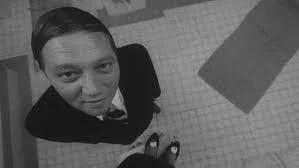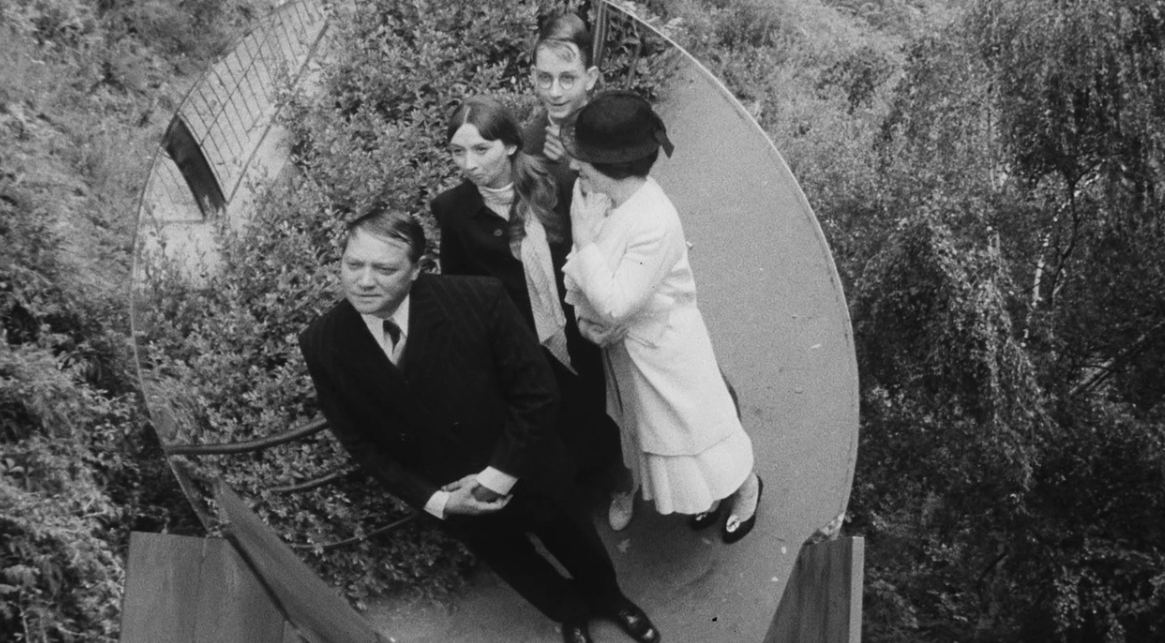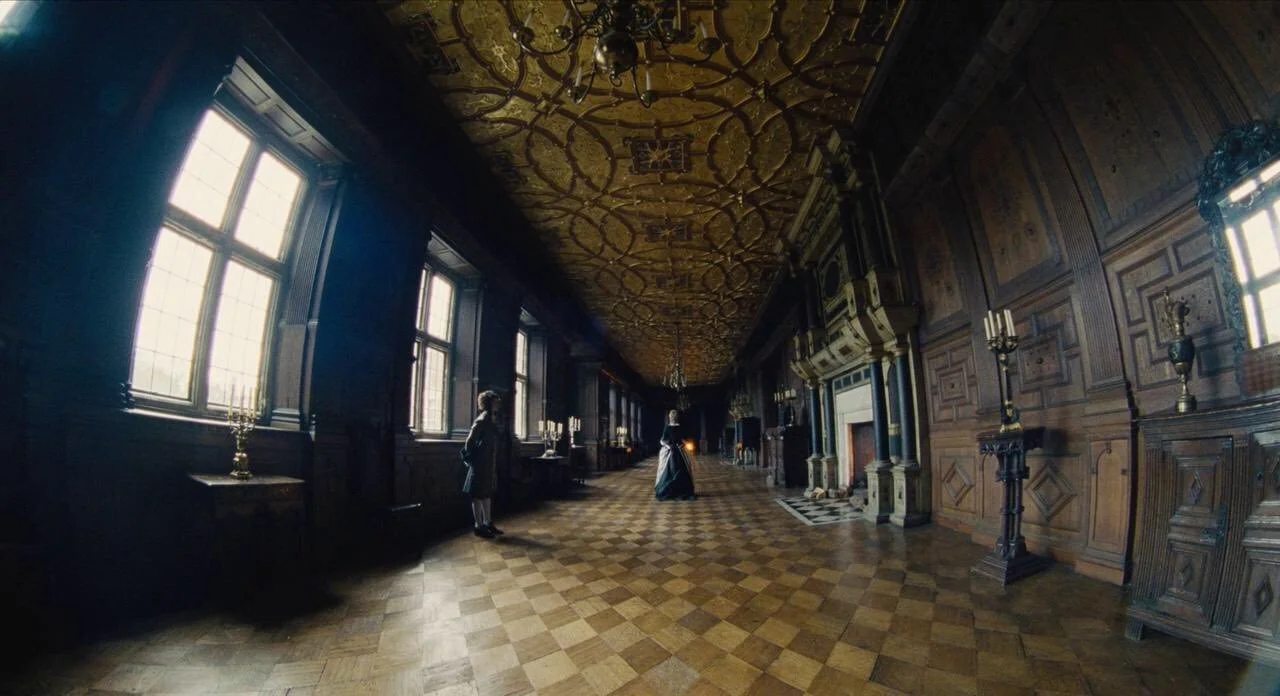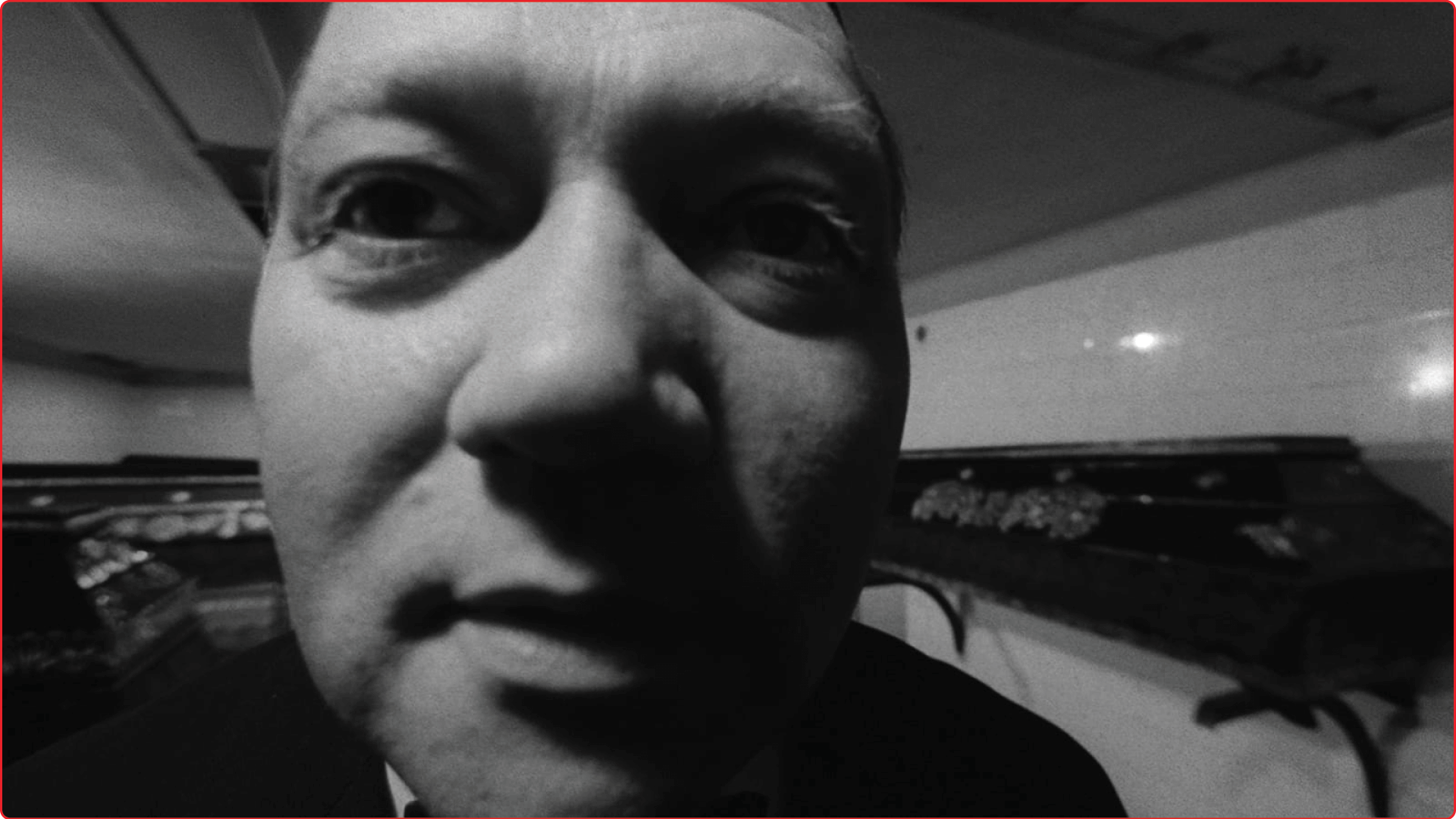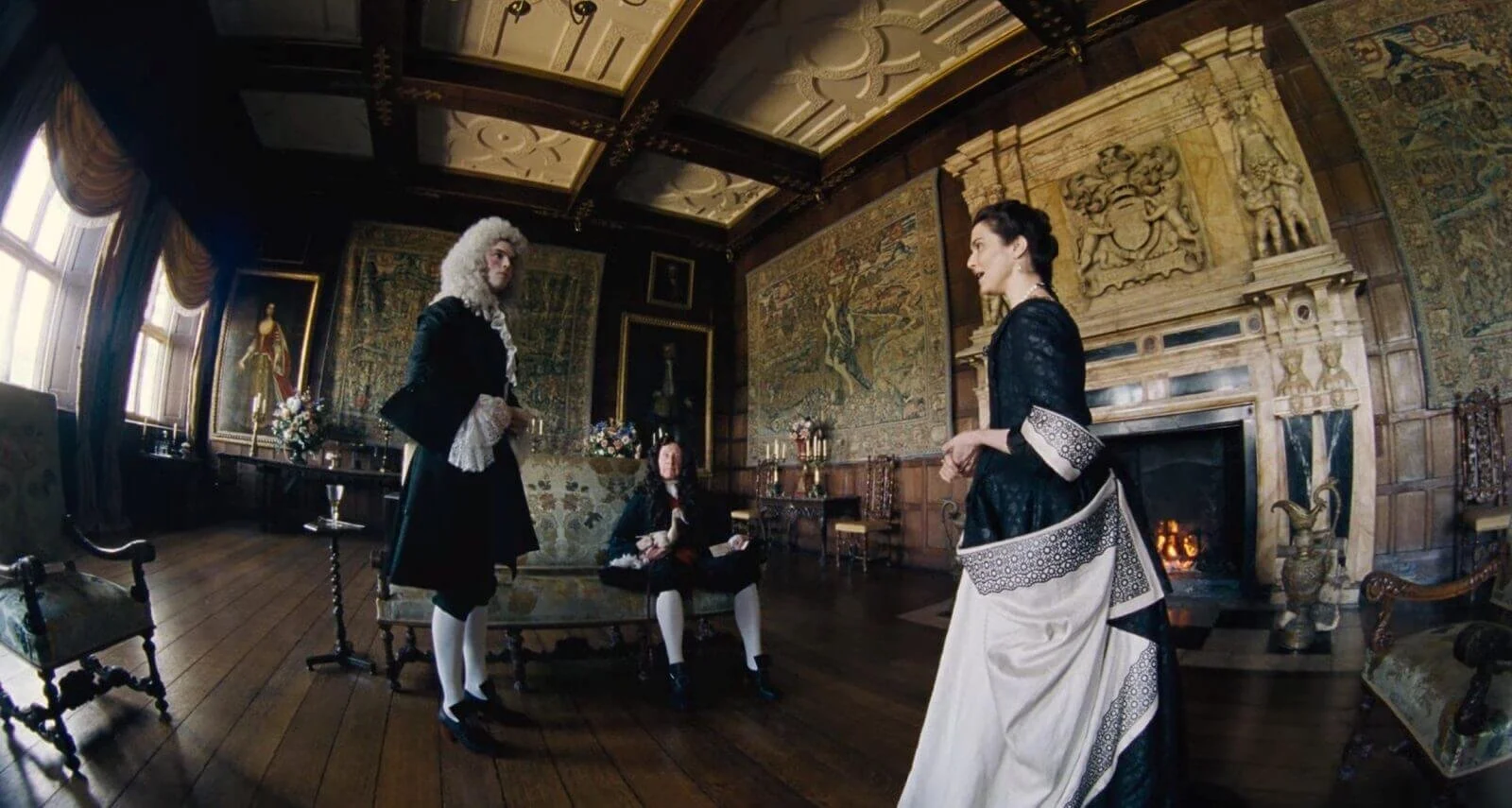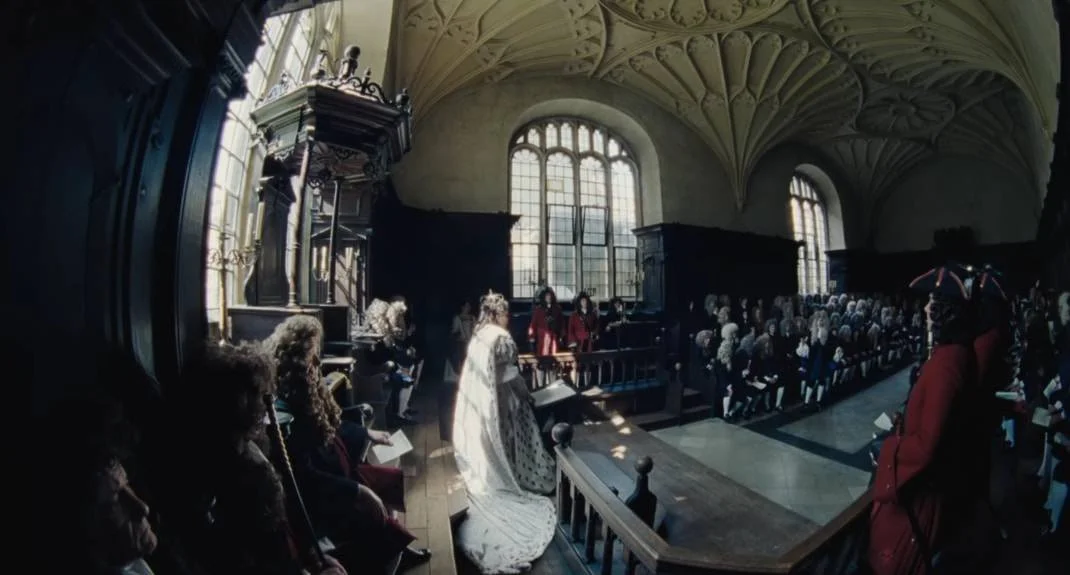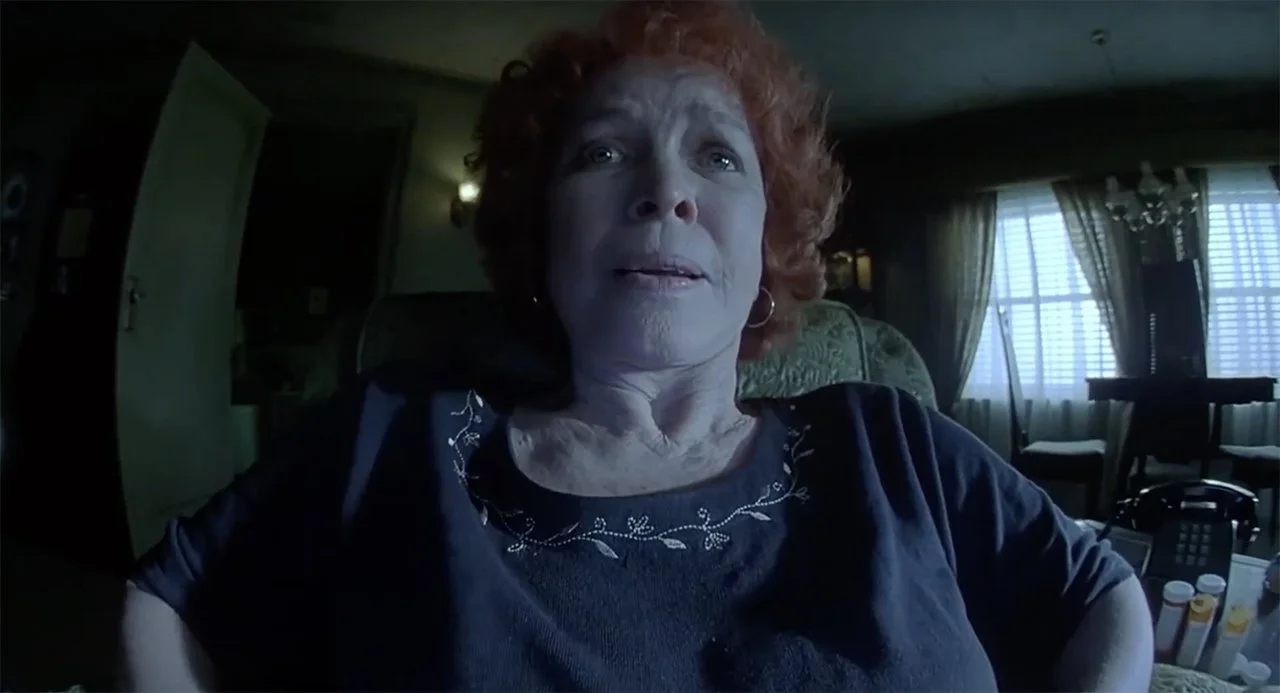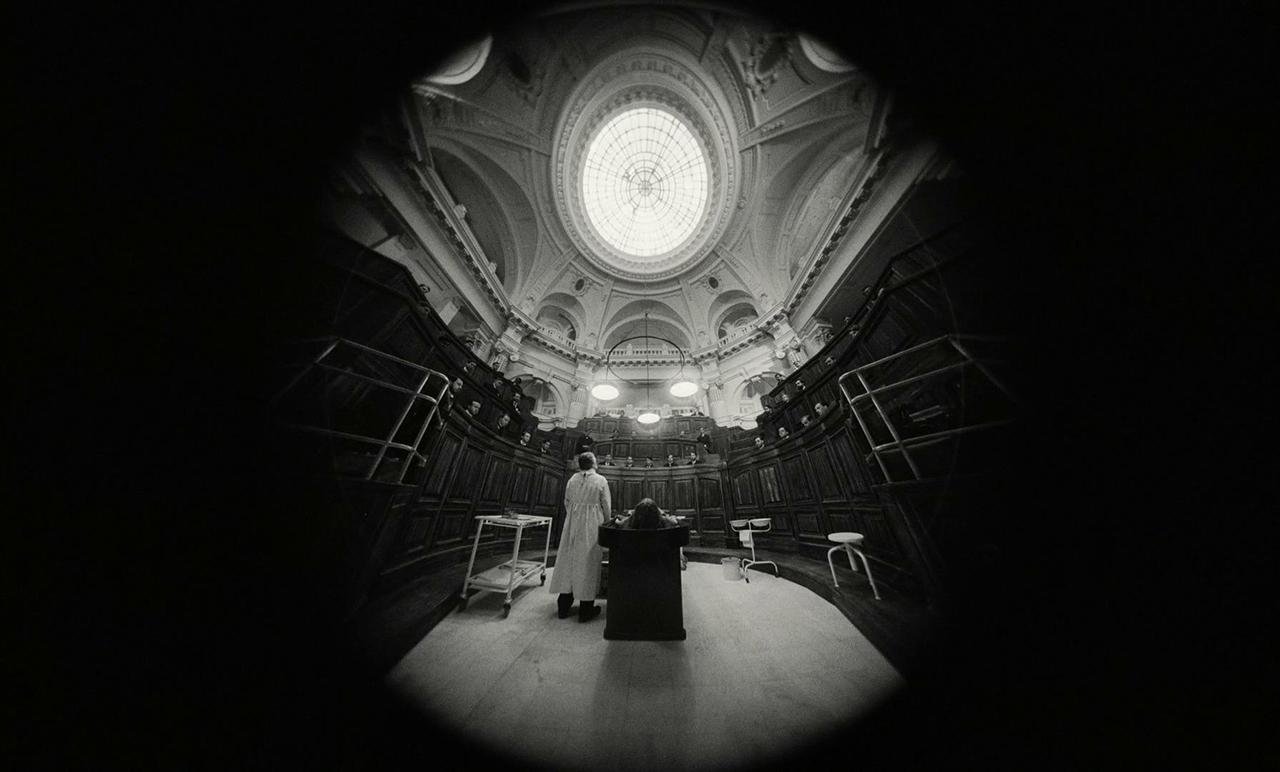
In Favor of the fisheye: Distortion and Obsession
The camera lens is not a passive observer; it shapes the way audience perceives narrative, space, and character psychology. Characterized by its ultra-wide field of view and spherical curvature, the fisheye lens bends straight lines near the edges of the frame, producing a warped, circular perspective that mimics peripheral vision or a hallucinated state. Its aesthetic is inherently disorienting, making it a powerful tool for representing psychological turmoil, spatial alienation, or thematic grotesquery. This style of lens was deployed in three stylistically distinct films: Juraj Herz’s The Cremator (1969), Darren Aronofsky’s Requiem for a Dream (2000), and Yorgos Lanthimos’s The Favourite (2018). Each film utilizes the lens for different narrative and emotional effects, yet all leverage its capacity for visual estrangement to enhance character psychology and thematic resonance.
Juraj Herz’s The Cremator, a Czechoslovak New Wave horror-drama, is a nightmarish portrayal of political conformity and moral decay. The protagonist, Karel Kopfrkingl, is a crematorium worker whose obsession with cleanliness, death, and Eastern philosophy leads him into Nazi collaboration. Herz’s use of the fisheye lens is central to the film’s aesthetic strategy, with it frequently appearing during Karel’s monologues or when he begins to slip deeper into delusion and ideological fanaticism.
Stills from Juraj Herz’s 1969 film, The Cremator
Stills from Yorgos Lanthimos’s 2018 film, The Favourite
The fisheye lens in The Cremator functions as a visual extension of Karel’s disturbed psyche. It accentuates his self-centered philosophy by distorting the world around him, suggesting that reality is being viewed entirely through the warped lens of his own ideology. The viewer is visually trapped in Karel’s headspace, and the curvature of the lens isolates him within a bubble of distorted perception. The lens elongates and exaggerated facial expressions and bodily proportions, rendering even mundane interactions uncanny and surreal. In a political context, this distortion critiques the dehumanizing logic of fascism by visually aligning Karel’s worldview with monstrosity and inhumanity.
Herz's use of the fisheye is done sparsely but deliberately, often reserved for scenes where Karel's delusions intensify. As a result, it punctuates moments of ideological fervor, visually cueing the audience to the increasing danger of his beliefs. The lens is not just a stylistic flourish, but an ideological instrument that reflects how totalitarian mindsets reshape perception itself.
In Yorgos Lanthimos’s The Favourite, the fisheye lens serves a markedly different purpose. Set in the 18th-century English court of Queen Anne, the film chronicles the bitter rivalry between two women vying for the queen’s affections. Lanthimos, known for his absurdist aesthetic, uses the fisheye to challenge the period genre’s visual conventions. In stark contrast to the opulence and symmetry typical of costume dramas, the fisheye warps the palace’s architecture, contorting its grandeur into something unstable and menacing. Unlike The Cremator, that uses the fisheye lens directly on its main character, The Favourite uses the lens as a way to warp the institution that the characters exists within, rather than the characters themselves.
Stills from Darren Arronofsky’s 2000 film, Requiem for a Dream
The lens here articulates spatial and emotional alienation. The characters, despite their proximity to power, are profoundly isolated, emotionally manipulative, paranoid, and desperate. The fisheye lens emphasizes this emotional distortion through the physical distortion of the space. Lavish halls and long corridors curve unnaturally, creating a claustrophobic environment where its subjects can’t move freely or escape scrutiny. The lens also mirrors the manipulative games and shifting alliances that define the narrative. In the same manner as the lens skews visual truth, the characters twist reality for their personal gain.
The fisheye use in The Favourite contributes to a feeling of surveillance. Often placed at a distance from the characters, the lens suggests they are being watched—perhaps by each other, by the audience, or by the institutional gaze of the monarchy itself. This use contrasts with more intimate or subjective uses of the lens in other films. Here, it reflects the oppressive architecture of power and decorum, warping not just space, but the social order.
In Darren Aronofsky’s Requiem for a Dream, the fisheye lens finds its most psychologically intimate application. The film is a harrowing depiction of addiction and the fracturing of human relationships and identity. Unlike The Cremator and The Favourite, which often use the lens to distort external space, Aronofsky employs the fisheye to collapse internal experience — conveying claustrophobia, disorientation, and isolation.
Most notably, the fisheye is used in scenes depicting Sarah Goldfarb, the aging mother addicted to amphetamines. As her mental state deteriorates, the camera clings to her in exaggerated proximity, warping her environment into a terrifying cocoon of paranoia. The wide, bent image transforms her apartment from a humble living space into a prison of loneliness and delusion. The fisheye places her in the center of a vortex, visually underscoring her descent into madness. This effect is heightened by Aronofsky’s rapid montages and split-screen sequences, making the distortion feel overwhelming and inescapable.
In Requiem for a Dream, the fisheye lens does not merely express addiction — it becomes an instrument of it. The curvature of the lens mimics the altered perception of drug users, creating a sense of detachment from reality while simultaneously trapping characters in it. The warped space reflects the warping of time, memory, and bodily integrity. This visual style doesn’t glamorize or aestheticize addiction; instead, it renders it grotesque and unbearable.
Across The Cremator, The Favourite, and Requiem for a Dream, the fisheye lens emerges as a tool of estrangement — spatially, emotionally, and ideologically. Though applied in different contexts and to different ends, the lens consistently serves to isolate characters, distort perception, and confront the viewer with the unreliability of what is seen. More than a technical gimmick, the fisheye lens is a powerful cinematic tool capable of visualizing altered states of mind.
